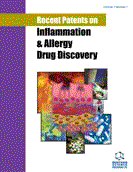Abstract
It is now clear that airway inflammatory processes characterized by eosinophils and Th2 lymphocytes are pivotal as the pathological features of asthma. Standard inhaled corticosteroids markedly suppress such inflammatory changes, resulting in clinical beneficial effects. However, it is also notified that airway wall remodeling including goblet cell hyperplasia, sub-epithelial collagen deposits, increased capillary networks and smooth muscle hypertrophy occur as a chronic consequence of this disorder even by the recommended strategies with steroid treatment. These pathologic changes play an important role in the increased airway obstruction and hyperresponsiveness, and eventually in the development of irreversible respiratory failure. Recent studies have elucidated that myofibroblasts and smooth muscle as well as mucosal epithelial cells play a vital role in these processes. Agents regulating proliferation, differentiation and activity of these cells, especially of low-molecular weight compounds, attract attention. Studies on molecular mechanisms of above processes, have led the development and patents of potential drugs including inhibitors of NF kappaB, statins, macrolides and phosphodiesterase-4 inhibitors.
Keywords: Asthma, mucosal epithelial cell, myofibroblast, smooth muscle cell, cytokines, chemokines, growth factor, signal transduction, transcription factor, statins
 13
13


















